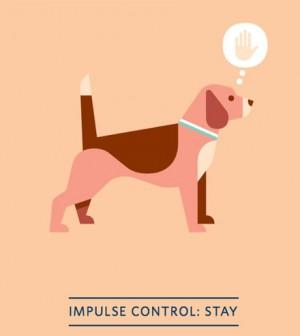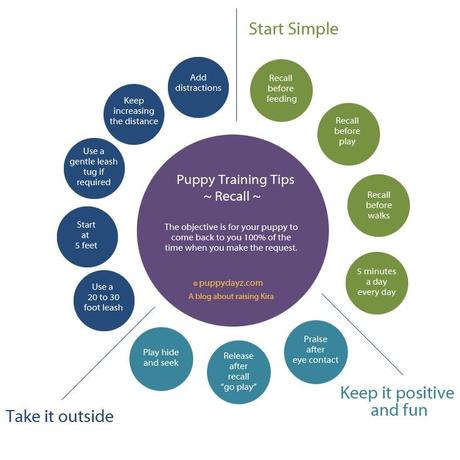
Training should be an enjoyable experience for both you and your dog. This article will get you started but if you are unsure always seek the help of a professional dog trainer sooner rather than later.
(Check out Secret to Effective Dog Training)
When to Train
There are many things to consider while training but the most important is to choose the right time. Aim to train for a few minutes several times a day as this will get much better results than a longer training session once a day. Choose times when you are not stressed or in a rush otherwise your dog will sense your tension and be far more likely to get things wrong in his attempts to please you.
Equally important is to consider your puppy’s mood. Trying to train an over-excited puppy who hasn’t had much exercise will be difficult. And a puppy who has just eaten a large meal will feel sleepy and will not be particularly motivated by food treats. Start training him in a quiet, distraction-free environment such as living room, especially when attempting to teach new or difficult commands. You may want to build up to training in high-distraction environments such as a local park but don’t attempt this until your puppy has had plenty of practice already.

Easy and effective tips for puppy training. *
Reward-Based Training
Training your dog involves creating a situation where he is rewarded for certain behaviors instead of others. Any behavior that is consistently rewarded will be repeated more often. This also means that bad behavior, which is not rewarded, will soon disappear and be replaced by one that is rewarded. For your dog to understand how you want him to behave, give or withhold a reward at just the right time. Rewards can include food treats, games iwht toys, simple praise and affection, or even playing with other dogs. Remember that not all dogs find the same rewards appealing. Spend some time discovering what really motivates your dog and use that as a reward. Giving a reward immediately following the behavior you want means you will never need to use punishment methods while training.
One of the easiest reward-based ways of training is to use a food treat to lure your dog into the position you want him to be in. More complicated behaviors can be broken down and rewarded in stages, in a method called “shaping.” So if you want your dog to sit, every time he moves closer to the ground and you reward him, he will realize what he is being asked to do. Getting rewarded for each small effort will make him repeat it. Maximize your training success by limiting his choices and thus preventing him from making the right decision. For instance, train on a lead away from other dogs or in a room with no distractions.
Carry your dog’s rewards with you whenever you plan to do some training. There is also a lot of equipment you can buy to help you during training such as collars, leads, and harnesses. Choose equipment that is more comfortable for both you and your dog to use and ask a professional to help you fit and use it correctly. However, always remember that while good equipment is necessary during training to keep your dog safe, avoid relying on tools to heavily. The day that you forget the equipment or it breaks, it will be the good training you have done that will prove the most important.
Key Rules of Training
- Keep training session short.
- End with a fun game.
- Use clear, consistent signals.
- Give signals at the right time and follow good behaviors with a reward immediately.
- Be patient.
- Break tasks into smaller chunks – don’t progress to the next stage until your dog is confident.
* image credit

